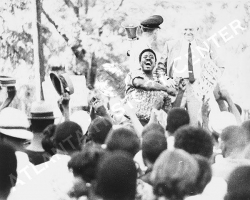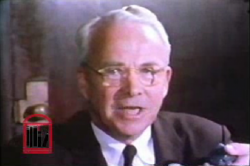Ivan Allen Jr. Biography: Re-election and the Second Term

Allen won an easy reelection in 1965 with strong black support, due in no small part to his congressional testimony, and with just a slight white majority. He had worked diligently to maintain a bi-racial coalition and the city’s reputation. Race relations continued to dominate Allen’s mayoralty as he worked with black leadership groups such as the Atlanta Summit Leadership Conference to remove obstacles to equality. But his gradual approach, although certainly indicating important progress, did not eliminate the glaring inequality issues still evident in the city. Few whites were willing to accept an equality of services, rights, and benefits that Atlanta’s African Americans wanted. Allen was caught between white resistance to real change and black demands for long overdue equal rights.

Inadequate housing, city services, park space, health care (especially at Grady Hospital), school desegregation and urban renewal all remained as contentious issues into the mayor’s second term. The Student Non-Violent Coordinating Committee (SNCC) was especially active in drawing attention to Atlanta’s neglected Southside black neighborhoods. Awareness of neighborhood problems had been brought sharply to the nation’s attention due to riots in the summers of 1965, 1966, and 1967 in a number of cities. The mayor was fully cognizant of what was happening in other cities, was warned that certain Atlanta areas were ready to explode, and moved to prevent a violent outbreak in the city. A relatively small riot did take place in the Southside Summerhill area in September 1966 precipitated by the building of Atlanta-Fulton County baseball stadium that resulted in the demolition of needed housing, by neighborhood conditions, and by rumors of the police shooting a black child. SNCC was blamed for the disturbance, but Allen became convinced, after some reluctance, that inadequate conditions were at fault rather than a civil rights organization. To his credit, Allen went to the riot center, walked into the crowd, stood atop a car (which he fell off when the throng shook the car) and tried to calm the large group before him. Tear gas, the arrival of more police, and the appearance of black leaders such as Martin Luther King, Sr. finally led to the crowd’s dispersal. The mayor, showing physical courage in this explosive situation, did what he could at the moment to prevent a major riot. Some people were injured and property was damaged, but no deaths occurred. Once again Atlanta and Allen received positive national press for avoiding the large-scale violent turmoil that other cities faced.

Improvements were made through Allen’s creation of the Atlanta Community Improvement Program. The riot speeded up the neighborhood changes that were already being discussed. It also led to the development of a permanent biracial Community Relations Commission to deal with neighborhood grievances such as racial turnover in housing. Another riot in June 1967 in Dixie Hills, a northwest Atlanta neighborhood, increased the push for corrective action. As in other areas, deficient recreational space, housing, and city services, long neglected, were the riot’s catalysts.
Allen was fortunate to have the federal government’s cooperation. Both Presidents Kennedy and Johnson found in Allen their southern model for race relations and anti-poverty programs. Atlanta benefited from its reputation and effective leadership when compared to other southern cities, and was rewarded with government largesse. For example, Atlanta became the first city to secure Model Cities funds.
Collection items featured on this page and other items of interest:
- WSB-TV newsfilm clip of Mayor Ivan Allen commenting that African Americans are locked into poverty by discrimination, Atlanta, Georgia, 1968 March 1
- Summerhill Riot
- WSB-TV newsfilm clip of mayor Ivan Allen blaming rioting on the Student Nonviolent Coordinating Committee, Atlanta, Georgia, 1966 October
